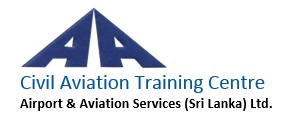

 |
 |
|
Lesson 3: Structure of our company
|
[Page 3.4] |
|
Divisions of our Company |
|
|
|
|
|
|
|
We learnt that when viewed from outside, our company performs 4 functions. In order to perform these functions, the company has been divided into 19 divisions. Many of these divisions are involved in one of the 4 functions while few of them are involved in more than one function. Then there are also some divisions which are not directly involved in the 4 functions but are required for the company to function as an organization. Every organization requires such divisions to sustain in business and to grow. |
|
|
|
|
|
|
|
In addition, there are 5 units which are there to achieve specific objectives for the company. |
|
|
|
|
|
|
|
The Chairman and the board is appointed by the minister. Including the chairman at least 5 directors must be appointed and a maximum of 11 directors may be appointed. A director so appointed to the board can hold office for a maximum period of 2 years. |
|
|
|
|
|
|
|
The board may also appoint one of the directors as the Vice Chairman. One or more directors may also be designated as Executive Directors. The Chairman, Vice Chairman and Executive Directors (if appointed), in addition to managing the company’s business as members of the board, direct the company on day to day basis. To facilitate this, the company runs a directorate with offices for the Chairman, Vice Chairman and Executive Directors, their secretariat, facilities for the board to meet and to interface with external parties on matters of business. |
|
|
|
|
|
|
|
Each division is assigned to a Head. The 19 heads of division are the highest level of permanent employees in the company. |
|
|
|
|
|
|
|
It is a common practice to allocate the divisions among the executive directors for ease of oversight and direction. When this is done each head of division will report to and receive directions from the respective executive director to whom his division is allocated. |
|
|
|
|
|
|
|
The heads run the company as directed by the board by being in charge of the respective divisions and managing the affairs of the division. The head is a qualified and experienced expert in the trade that particular division is specialized in. Each division has its own structure representing a second level of senior executives followed by general staff and support staff levels. The divisional structures are often unique so as to suit the requirements of the particular trade. Several divisions have deputy heads who share the responsibilities of the head to an extent decided by the head. |
|
|
|
|
|
|
|
You can learn more about each division or unit by clicking the respective title given below: |
|
|
|
|
|
|
 |
|||
 |
|||
| <Top | |||
|
It is important to understand that although the company has 19 divisions, it is primarily performing the 4 functions we learnt in Lesson 2. The divisional structure is important for us, the employees to work in the company. For outsiders, what is more important is the 4 functions of the company. In performing those functions, as you would have realized from the descriptions of each division, no single division can perform any of those functions in isolation. Divisions are interdependent on each other. This interdependence is a critical requirement for the success of our company. As employees, we all need to realize this and work as a single team, towards the same set of objectives. |
|
|
|
|
|
|
|
This is why we all must think of ourselves as aviators. |
|
|
| <Top |
Powered by IT Division for delivery by the VTW CATC © AASL All Rights Reserved